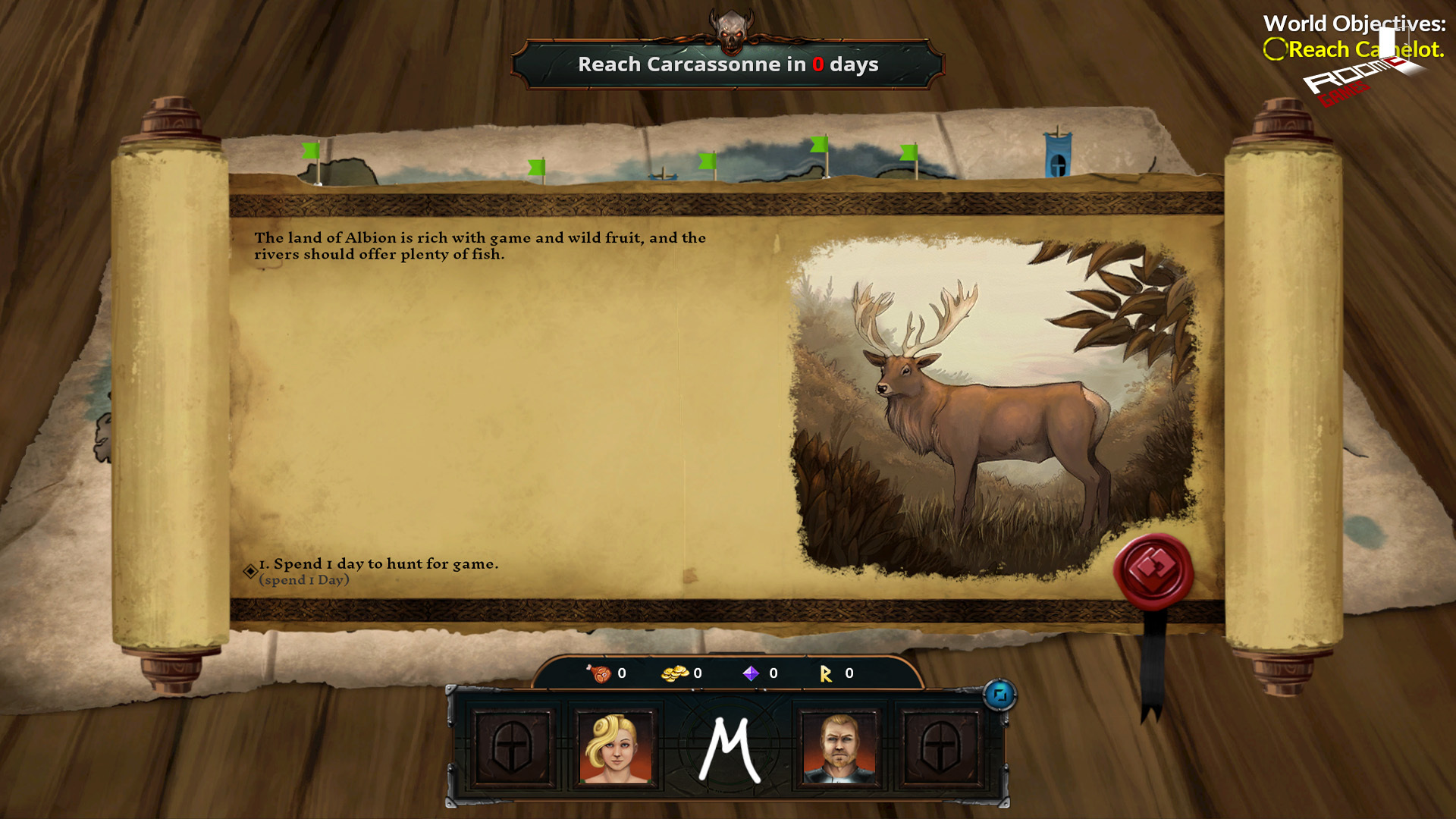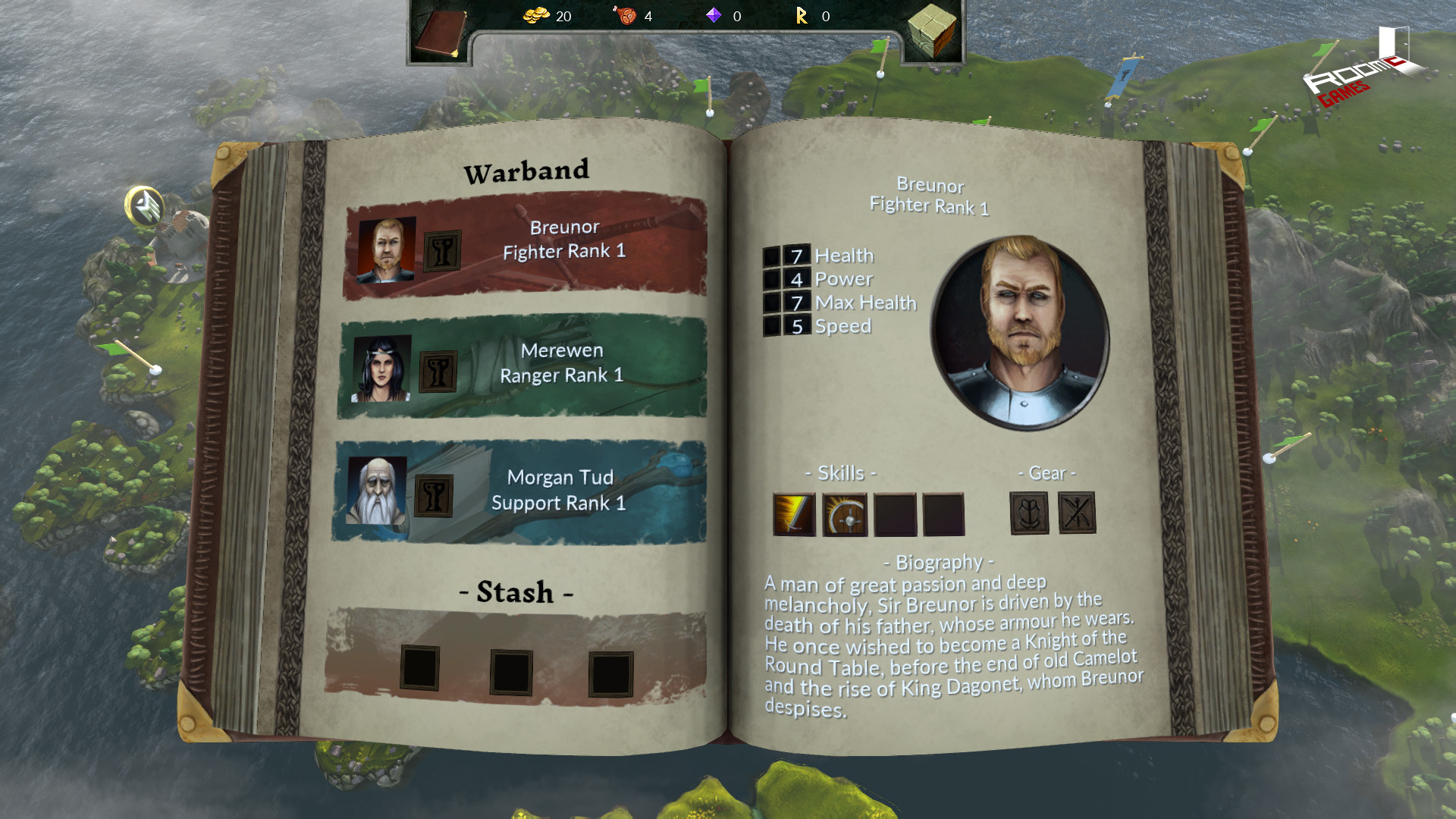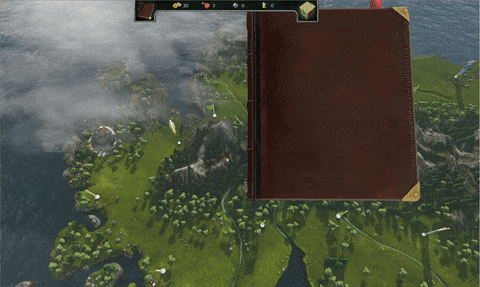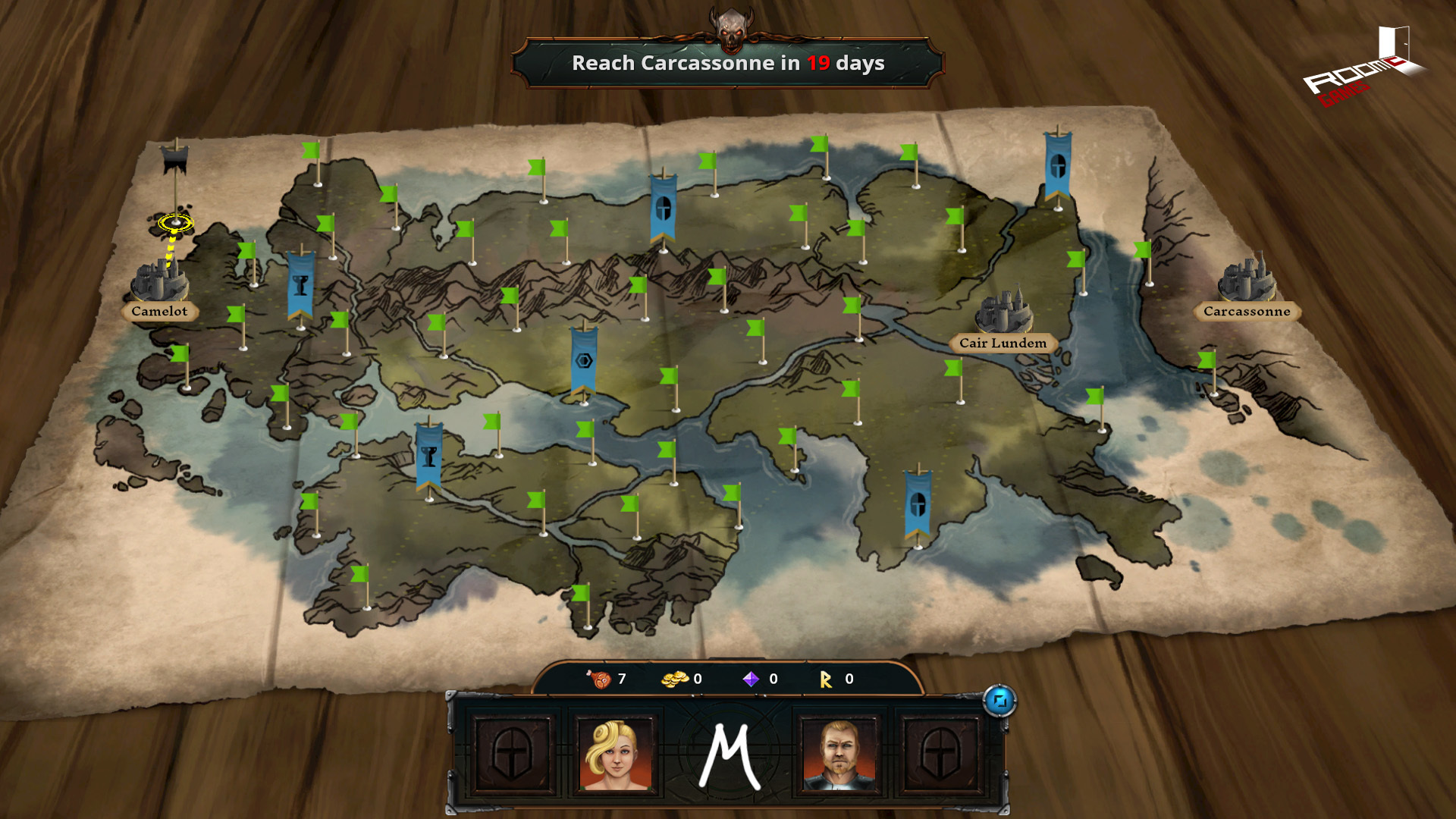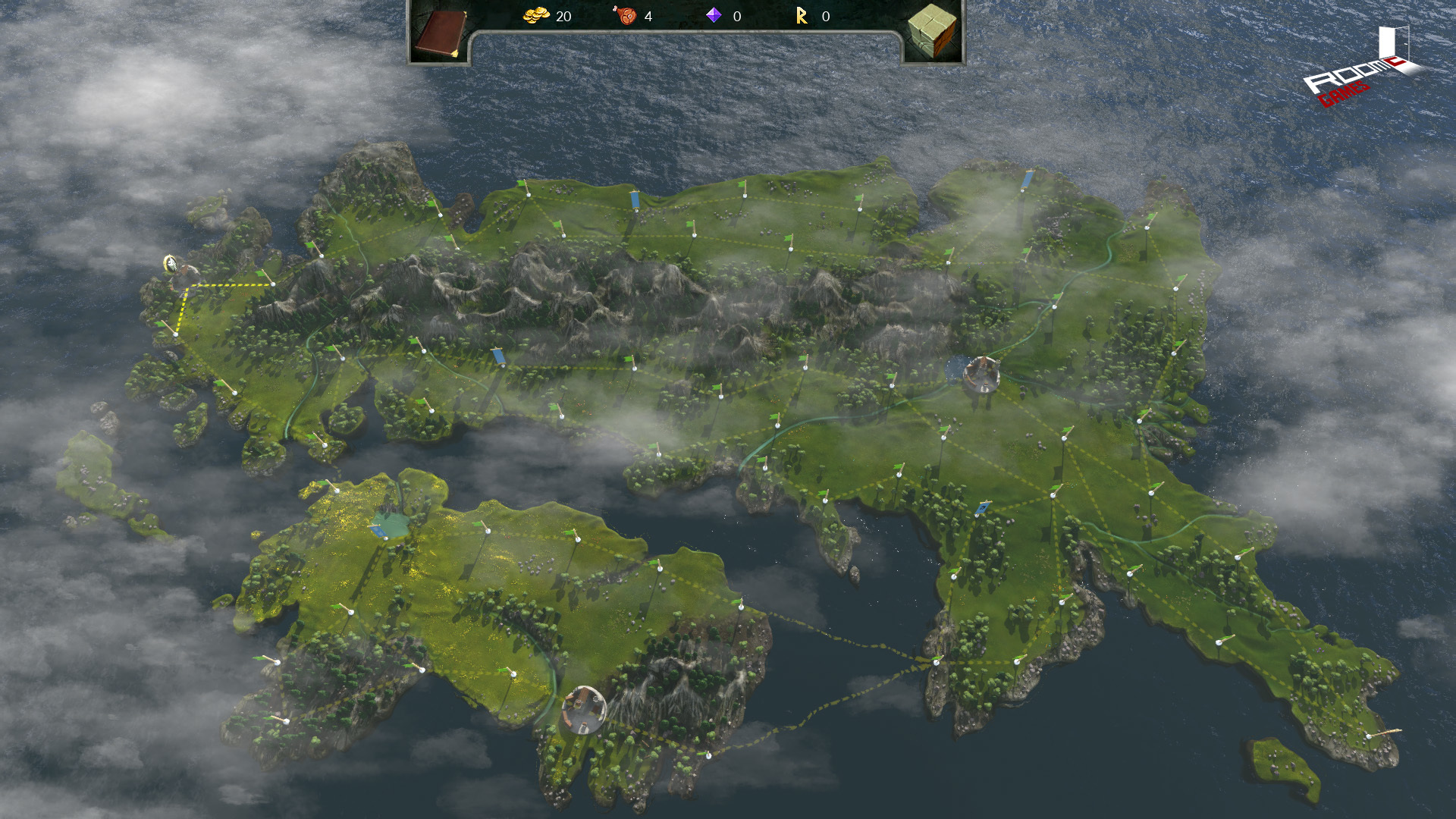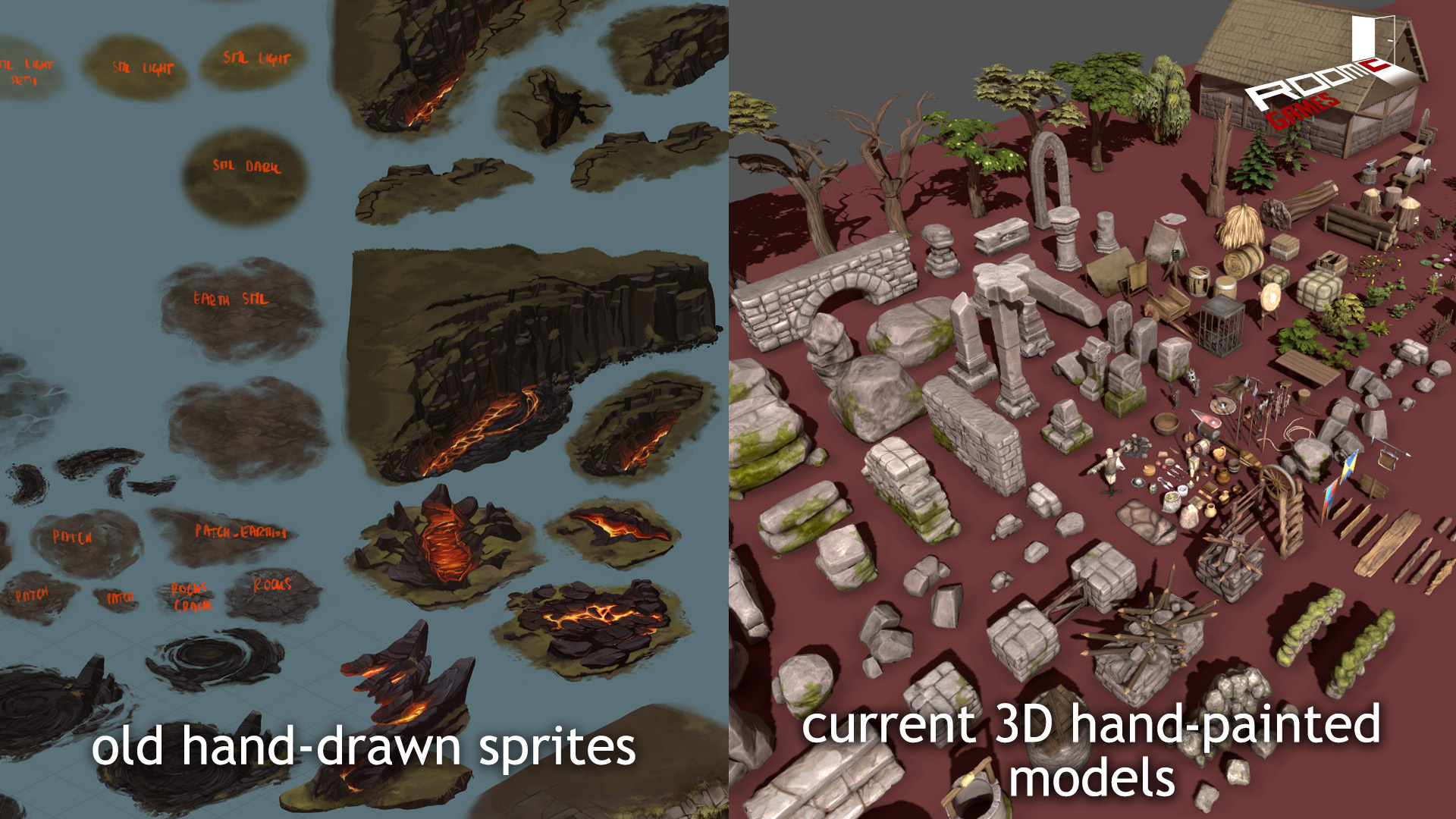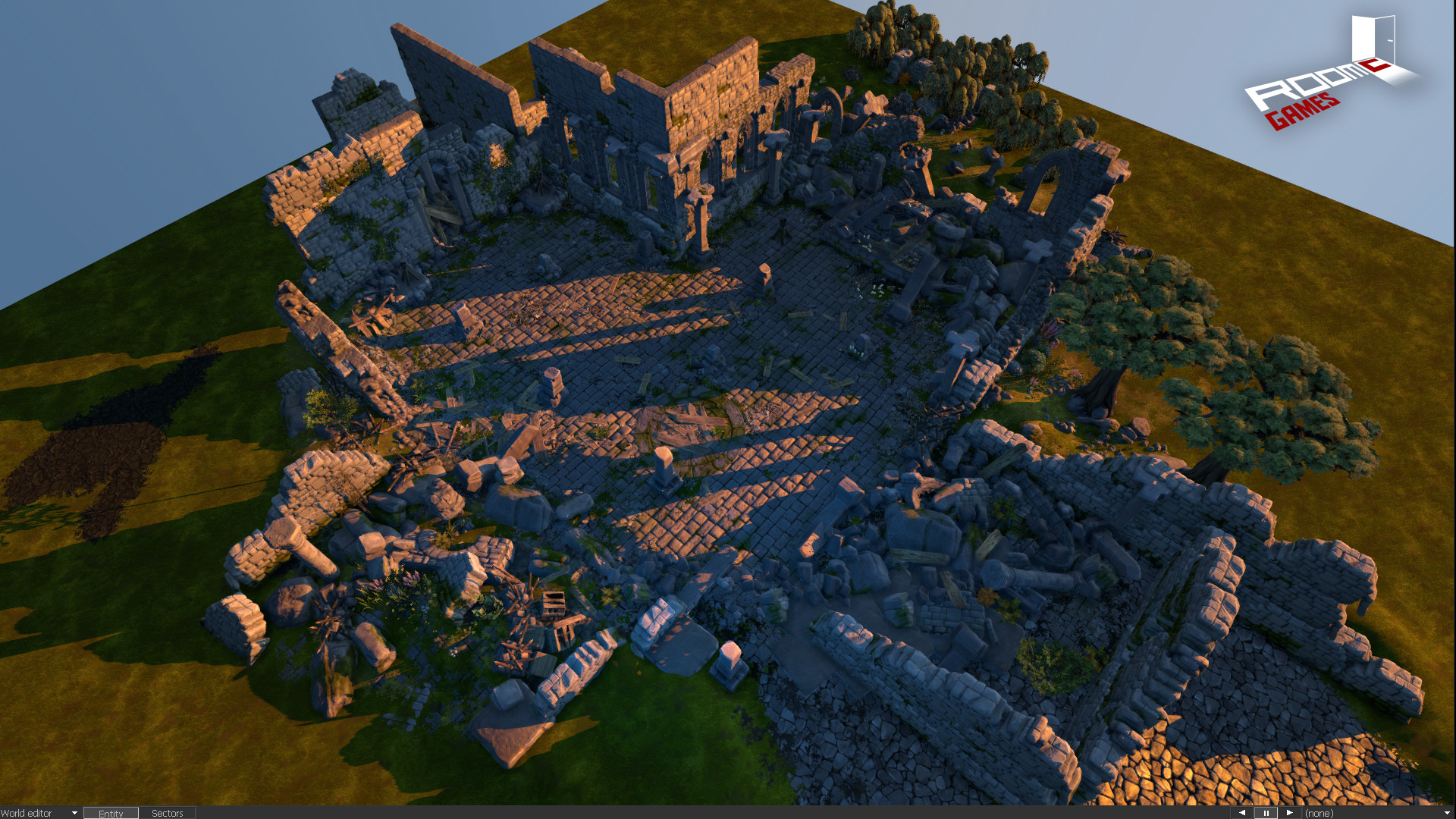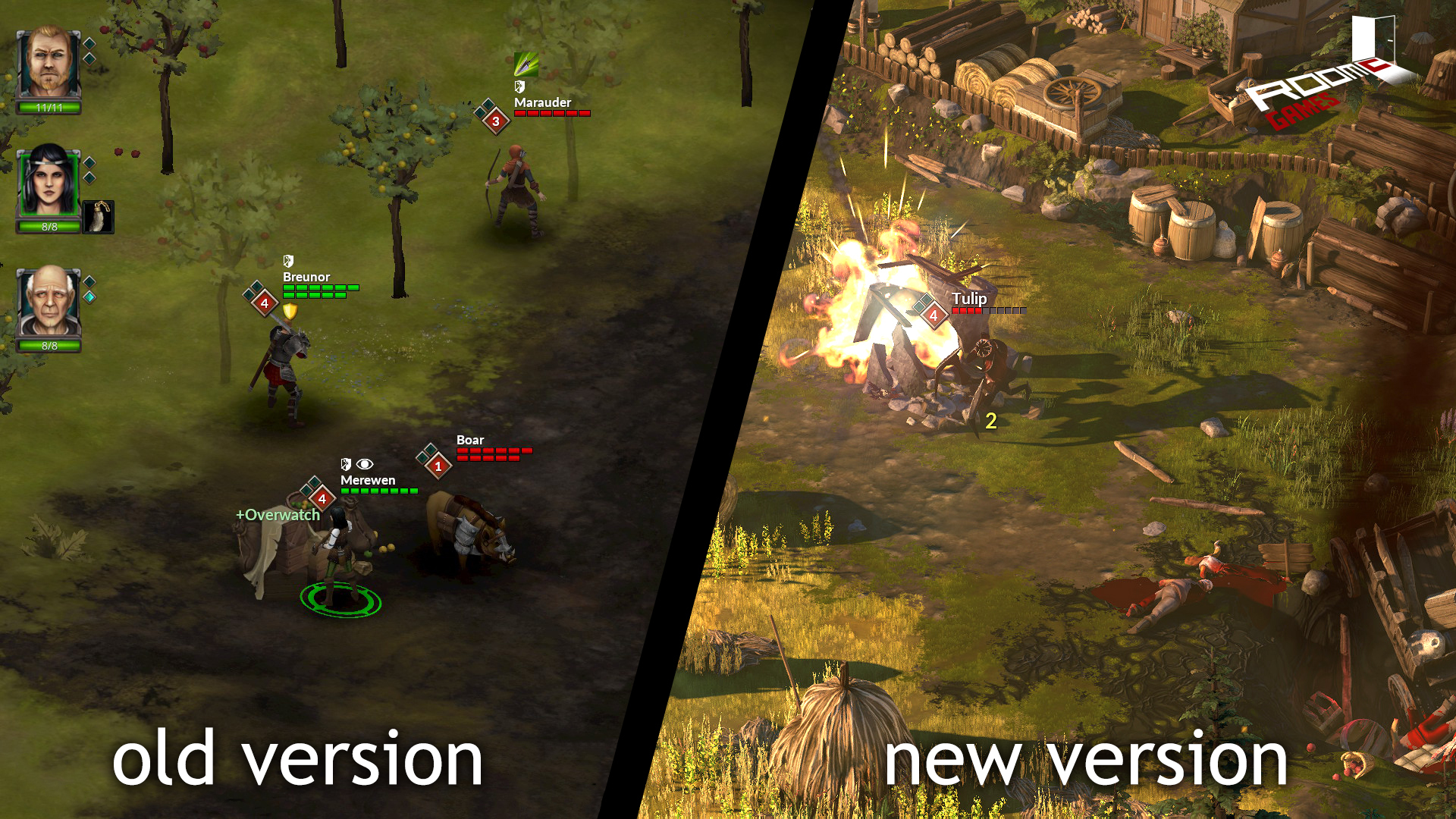
Feb 12, 2020
The Hand of Merlin - MarkoP
Hey everyone!
Last week I showed you the book that acts as our interface to the party management screen, and the interaction with encounters. The encounters are short stories that describe what happens to your party when they arrive at a world location. The world map has a series of nodes, and each node will have one of these. Encounters can be a very short introduction to the combat you’re about to enter, just setting the scene, or they can be a story about a terrible robber that preys on rich travellers, a maiden in distress, a magical monocerus, fairy rings in the forest, and so on. As you can see, the world has some aspects of “magic” in it, however, we’re going down the route of “magic is just science that is not yet explained”. This ties into the reasons why our combat is low fantasy without magic - our units all just use science that would be available to them (alchemy, chemistry and the like), which is the baseline for our support class. The exception to this is a category of abilities we call Spells, but those follow the same idea (they’re spells to the uninitiated, i.e. the units), and I’ll write a post about the combat in a few weeks where i’ll explain all of that.

As you can see in the picture above, the encounters are split into short segments that can fit on one page. Each segment is usually accompanied with a set of choices the player can make to drive the story forward, or bail out on the encounter altogether. We try making it a point to allow the player to bail on the encounter several times in the buildup or introduction phase, since in most cases we don’t want to lock the player into an encounter which he doesn’t want to do (for example, forcing the player to spend gold without making it a conscious decision).
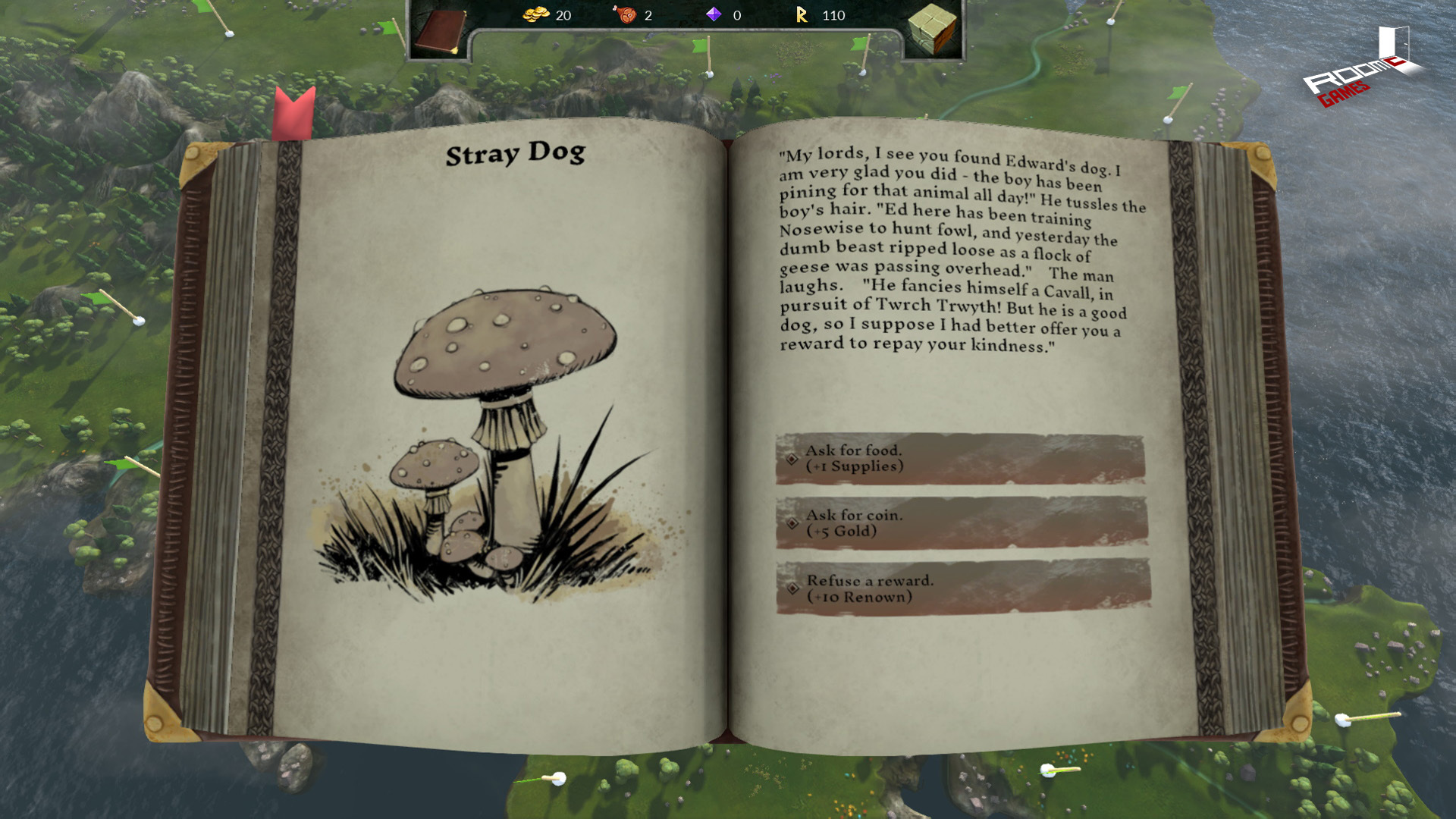
The dialog choices the player can make are written in a way that progresses the story and time forward. Each choice advances the “state” of the encounter, if it makes sense - imagine each option as an action the player makes in the moment. A ‘look’ action is not the same as the ‘take’ action, as one of them will alter the situation, and the other is just information gathering. Once the player makes a decision on what to do, (usually) there’s no going back. If you choose to sell a relic to a merchant, there's no chance he’s willing to sell it back to you. At least, not without increasing the price :) Deciding to walk over a rickety bridge might mean it collapses under you, losing you some gold or supplies, but it could also mean you narrowly make it to the other side before it collapses. The same encounter in one run can have a vastly different outcome in another run, all depending on the choice the player makes, and some internal randomness in each encounter (like the bridge example above). We won’t have any timers when choosing an option, since different people have different reading speeds, and different decision making speeds. Also, some decisions might require you to look at your party’s status (which is always reachable via the bookmark in the top left of the book), to determine if a choice is useful for your current situation. If your units are low on health, you might prefer a choice that heals your units instead of a choice that gives you gold, and the other way around if you’re full on health.

All of the encounters are written by the Kyratzes family: Jonas and Verena. They're a writing team that started by making story-heavy indie games like The Sea Will Claim Everything. Jonas then worked on The Talos Principle, and later Verena joined him on Serious Sam 4. Jonas also worked on Phoenix Point and The Eternal Cylinder. It’s through their work on The Talos Principle that we got to know them, and at some point, asked them if they were interested in working on the story and encounters for our game. They agreed, and have written several encounters to test the waters - how they would function in the limited confines of our presentation methods (we have to limit the amount of text per page due to clipping and to not have a wall of text for the player to read). Based on their feedback on writing the encounters, we wrote a custom syntax file format that allows a lot of control over how the encounters play out: randomness, different page paths, character specific actions, global state changes, combat spawn location variations, and more. Jonas and Verena have a lot of experience writing stories, and we are working on a streamlined process that allows them to think only about the story itself, and leave all the game balancing and pacing of the encounters to us. We look forward to seeing what great stories they come up with. :)
Next week I’ll start getting into the other aspect of our game, the combat scenarios. They’re turn-based grid-based party-based skirmishes, that pit the player’s 3 man party against various bandits and a sinister unknown threat from the beyond (ooo spooky).
As always, you can join the Hand of Merlin Discord server, and you can follow me on Twitter if you want to throw some questions about the game in my direction. I’m still learning how to effectively use the damn thing, but I might throw some exclusive screenies there from time to time.
Until next time!
MarkoP
Last week I showed you the book that acts as our interface to the party management screen, and the interaction with encounters. The encounters are short stories that describe what happens to your party when they arrive at a world location. The world map has a series of nodes, and each node will have one of these. Encounters can be a very short introduction to the combat you’re about to enter, just setting the scene, or they can be a story about a terrible robber that preys on rich travellers, a maiden in distress, a magical monocerus, fairy rings in the forest, and so on. As you can see, the world has some aspects of “magic” in it, however, we’re going down the route of “magic is just science that is not yet explained”. This ties into the reasons why our combat is low fantasy without magic - our units all just use science that would be available to them (alchemy, chemistry and the like), which is the baseline for our support class. The exception to this is a category of abilities we call Spells, but those follow the same idea (they’re spells to the uninitiated, i.e. the units), and I’ll write a post about the combat in a few weeks where i’ll explain all of that.

As you can see in the picture above, the encounters are split into short segments that can fit on one page. Each segment is usually accompanied with a set of choices the player can make to drive the story forward, or bail out on the encounter altogether. We try making it a point to allow the player to bail on the encounter several times in the buildup or introduction phase, since in most cases we don’t want to lock the player into an encounter which he doesn’t want to do (for example, forcing the player to spend gold without making it a conscious decision).

The dialog choices the player can make are written in a way that progresses the story and time forward. Each choice advances the “state” of the encounter, if it makes sense - imagine each option as an action the player makes in the moment. A ‘look’ action is not the same as the ‘take’ action, as one of them will alter the situation, and the other is just information gathering. Once the player makes a decision on what to do, (usually) there’s no going back. If you choose to sell a relic to a merchant, there's no chance he’s willing to sell it back to you. At least, not without increasing the price :) Deciding to walk over a rickety bridge might mean it collapses under you, losing you some gold or supplies, but it could also mean you narrowly make it to the other side before it collapses. The same encounter in one run can have a vastly different outcome in another run, all depending on the choice the player makes, and some internal randomness in each encounter (like the bridge example above). We won’t have any timers when choosing an option, since different people have different reading speeds, and different decision making speeds. Also, some decisions might require you to look at your party’s status (which is always reachable via the bookmark in the top left of the book), to determine if a choice is useful for your current situation. If your units are low on health, you might prefer a choice that heals your units instead of a choice that gives you gold, and the other way around if you’re full on health.

All of the encounters are written by the Kyratzes family: Jonas and Verena. They're a writing team that started by making story-heavy indie games like The Sea Will Claim Everything. Jonas then worked on The Talos Principle, and later Verena joined him on Serious Sam 4. Jonas also worked on Phoenix Point and The Eternal Cylinder. It’s through their work on The Talos Principle that we got to know them, and at some point, asked them if they were interested in working on the story and encounters for our game. They agreed, and have written several encounters to test the waters - how they would function in the limited confines of our presentation methods (we have to limit the amount of text per page due to clipping and to not have a wall of text for the player to read). Based on their feedback on writing the encounters, we wrote a custom syntax file format that allows a lot of control over how the encounters play out: randomness, different page paths, character specific actions, global state changes, combat spawn location variations, and more. Jonas and Verena have a lot of experience writing stories, and we are working on a streamlined process that allows them to think only about the story itself, and leave all the game balancing and pacing of the encounters to us. We look forward to seeing what great stories they come up with. :)
Next week I’ll start getting into the other aspect of our game, the combat scenarios. They’re turn-based grid-based party-based skirmishes, that pit the player’s 3 man party against various bandits and a sinister unknown threat from the beyond (ooo spooky).
As always, you can join the Hand of Merlin Discord server, and you can follow me on Twitter if you want to throw some questions about the game in my direction. I’m still learning how to effectively use the damn thing, but I might throw some exclusive screenies there from time to time.
Until next time!
MarkoP




